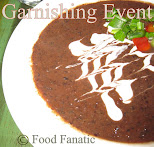
The closest North American version of Dhokla is
cornbread. Dhokla is a very popular Indian snack that comes from the western part of India, specifically Gujarat. Gujarati food is famous for a touch of sweetness in every savory dish, and dhokla is no different. (Check out some other recipes on Gujarati food
here).
Dhokla is healthy, quick, and tasty teatime food. The batter for Dhokla is made of chickpea flour which is steamed into a spongy cake (or bread) and finally tempered with flavoured oil. Dhokla has a moist cornbread like texture that melts in the mouth while the harmony of sugar and spice pampers your tastebuds. The bright yellow color of this dish can certainly add life to the dining table.
OK. I hope I have tempted you enough to be ready to cook up this delicious delight. :) Here you go with the recipe....
Ingredients:
1. 3/4 cup Chickpea flour (besan)
2. 1/2 cup water
3. 2 tablespoons lemon juice
4. 1/2 tablespoon sugar
5. 1 1/2 tablespoons olive oil
6. 1/2 teaspoon salt
7. 1/4 teaspoon turmeric powder
8. 1 packet
Eno lemon salt (anti acid from India)
For the garnish:
1. 1 teaspoon mustard seeds
2. 5-6 fresh curry leaves
3. 1/4 teaspoon Red chili powder
4. 1 tablespoon oilve oil
Instructions:

For the bread:
1. Mix ingredients 1 to 8 together to form a batter.
2. Lightly oil a steel plate and pour the batter on the plate.
3. Put the plate in a steamer or dhokla maker and cook for 15 minutes on medium heat.
Note: You can alternatively bake the batter in an oven or use a microwave. A pressure cooker will work too if you don't have a dhokla maker.
4. Pierce a knife though it and if it comes out clean, it is done. Set aside and cool.
For the garnishing:
1. In a small pan, heat oil.
2. Add mustard seeds and allow to cracke.
3. Add curry leaves, red chili powder, 2 serving spoons water
3. Boil this.
4. Using a spoon spread this mixture all over the bread that was kept aside to cool.
Slice into bite size pieces and Voila! Your savory treat Dhokla (Indian Chickpea bread) is ready.
Serve Dhokla with mint-coriander chutney (which I will show you how to make in another post) and there is no chance that it will be a miss!
 Great taste, flavor, and aroma using some of the bare minimum ingredients of Indian cuisine- that's our recipe for today. Tamatar chop with a soft cotton like texture undoubtedly melts in the mouth. Green chili gives it that extra kick just to awaken your taste buds while richness of ghee caresses your senses to add that homely touch which any palate would crave for.
Great taste, flavor, and aroma using some of the bare minimum ingredients of Indian cuisine- that's our recipe for today. Tamatar chop with a soft cotton like texture undoubtedly melts in the mouth. Green chili gives it that extra kick just to awaken your taste buds while richness of ghee caresses your senses to add that homely touch which any palate would crave for.





















































